| Title | Motor learning changes the axon initial segment of the spinal motoneuron. |
| Publication Type | Journal Article |
| Year of Publication | 2024 |
| Authors | Wang, Y, Chen, Y, Chen, L, Herron, BJ, Chen, XYang, Wolpaw, JR |
| Journal | J Physiol |
| Volume | 602 |
| Issue | 9 |
| Pagination | 2107-2126 |
| Date Published | 2024 May |
| ISSN | 1469-7793 |
| Keywords | Animals, Ankyrins, Axon Initial Segment, Axons, Conditioning, Operant, H-Reflex, Learning, Male, Motor Neurons, Neuronal Plasticity, Rats, Rats, Sprague-Dawley, Spinal Cord |
| Abstract | We are studying the mechanisms of H-reflex operant conditioning, a simple form of learning. Modelling studies in the literature and our previous data suggested that changes in the axon initial segment (AIS) might contribute. To explore this, we used blinded quantitative histological and immunohistochemical methods to study in adult rats the impact of H-reflex conditioning on the AIS of the spinal motoneuron that produces the reflex. Successful, but not unsuccessful, H-reflex up-conditioning was associated with greater AIS length and distance from soma; greater length correlated with greater H-reflex increase. Modelling studies in the literature suggest that these increases may increase motoneuron excitability, supporting the hypothesis that they may contribute to H-reflex increase. Up-conditioning did not affect AIS ankyrin G (AnkG) immunoreactivity (IR), p-p38 protein kinase IR, or GABAergic terminals. Successful, but not unsuccessful, H-reflex down-conditioning was associated with more GABAergic terminals on the AIS, weaker AnkG-IR, and stronger p-p38-IR. More GABAergic terminals and weaker AnkG-IR correlated with greater H-reflex decrease. These changes might potentially contribute to the positive shift in motoneuron firing threshold underlying H-reflex decrease; they are consistent with modelling suggesting that sodium channel change may be responsible. H-reflex down-conditioning did not affect AIS dimensions. This evidence that AIS plasticity is associated with and might contribute to H-reflex conditioning adds to evidence that motor learning involves both spinal and brain plasticity, and both neuronal and synaptic plasticity. AIS properties of spinal motoneurons are likely to reflect the combined influence of all the motor skills that share these motoneurons. KEY POINTS: Neuronal action potentials normally begin in the axon initial segment (AIS). AIS plasticity affects neuronal excitability in development and disease. Whether it does so in learning is unknown. Operant conditioning of a spinal reflex, a simple learning model, changes the rat spinal motoneuron AIS. Successful, but not unsuccessful, H-reflex up-conditioning is associated with greater AIS length and distance from soma. Successful, but not unsuccessful, down-conditioning is associated with more AIS GABAergic terminals, less ankyrin G, and more p-p38 protein kinase. The associations between AIS plasticity and successful H-reflex conditioning are consistent with those between AIS plasticity and functional changes in development and disease, and with those predicted by modelling studies in the literature. Motor learning changes neurons and synapses in spinal cord and brain. Because spinal motoneurons are the final common pathway for behaviour, their AIS properties probably reflect the combined impact of all the behaviours that use these motoneurons. |
| DOI | 10.1113/JP283875 |
| Alternate Journal | J Physiol |
| PubMed ID | 38568869 |
| PubMed Central ID | PMC11196014 |
| Grant List | NS110577 / NH / NIH HHS / United States NS22189 / NH / NIH HHS / United States 1P41EB018783 / NH / NIH HHS / United States HD36020 / NH / NIH HHS / United States I01 BX002550 / BX / BLRD VA / United States NS061823 / NH / NIH HHS / United States R01 HD036020 / HD / NICHD NIH HHS / United States P41 EB018783 / EB / NIBIB NIH HHS / United States R01 NS022189 / NS / NINDS NIH HHS / United States R01 NS110577 / NS / NINDS NIH HHS / United States R01 NS061823 / NS / NINDS NIH HHS / United States |

